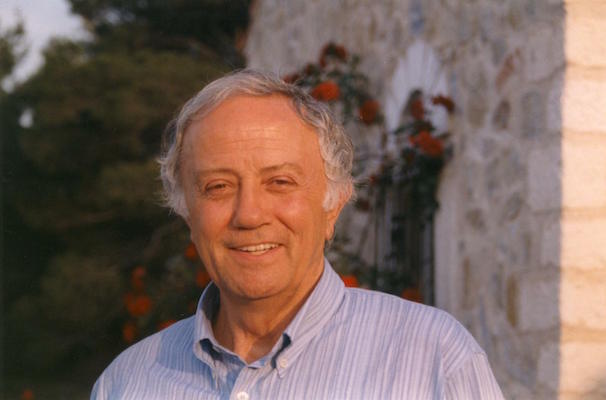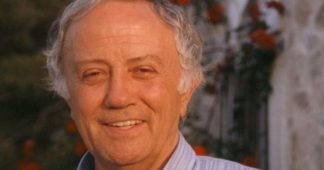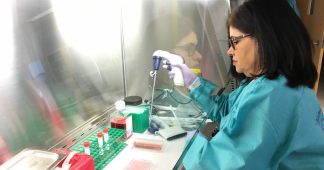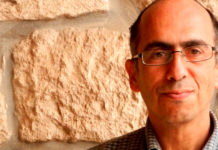Synthese Journal has published a libellous article against homeopathy, describing this medical school, along with all alternative treatments, as a pseudoscience (https://link.springer.com/article/10.1007/s11229-022-03882-w). The libel is of an extremely low intellectual quality, as any cultured person can understand, even if he has no idea about allopathetic and homeopathetic medicine, for only a completely uncultured person could include Freud’s psychoanalysis, along with astrology and scientology, in the pseudosciences!!!
Of course one can totally disagree with Freud’s specific conclusions, but no one with an elementary acquaintance of modern civilization can ignore Freud’s contribution to it. To treat Freud’s ideas of “pseudoscience” is a blatant demonstration of the fact that our universities are producing scores of completely uneducated and uncultured overspecialised “scientists”. They are the pseudo-scientists, if we stick to the Renaissance’s understanding of Science.
But the magazine Synthese Journal did not only agree to publish this libel, but at the same time refused to allow the most known proponent of classical homeopathy in our times, Professor Vithoulkas, to respond to it.
This is a kind of modern Holy Inquisition. Arguments are again replaced by absolute truths, which are not coming this time from the Vatican, but from the mainstream western scientific establishment, in the name not of God, as interpreted by the Pope, but in the name of science. And sometimes, regarding medicine, one can easily discern there, more often than not, the influence of the Big Pharma groups.
Homeopathy, along with a number of other “alternative” medical approaches (the belief in which seems to be considered by the author as not very far away from a symptom of mental illness), has gained an extended interest during the last decades, out of the realisation that the standard western medical approach, based to a large degree on the massive use of chemical drugs, in spite of its enormous successes in some fields, is not so efficient in treating chronic diseases; it often has serious side-effects and it is too much influenced by the interests of giant pharmaceutical groups (more and more coordinating between themselves and gradually becoming a monopoly), which have an overwhelming and not always good influence on health politics and medical practice and research.
The real spirit of science is to study all approaches, without refusing a priori, on the basis of preconceptions, any one of them. This is the real way in which science has progressed, not with aphorisms, by questioning itself and its own conclusions, on the basis of experiment and experience. Truth lies in contradiction, and our advances in grasping it are based on our capacity to accept different views, to search the reasons of failures, to investigate what seems for now strange. All great scientific discoveries were considered as nonsense before they were confirmed; all of them have been the result of contestatibg previous established scientific truths. This is the way real science advances.
We also wish to note that the way in which various “scientific authorities” claim a monopoly of opinion and of knowledge and refuse any criticism is a proof of their authoritarian, deeply anti-scientific mentality, constituting in itself a huge obstacle to scientific progress. But it has also fuelled, on a massive scale, a complete rejection of science as such by large parts of public opinion, thus facilitating our descent into a new Dark Age.
We publish below the answer to the libel by Professor George Vithoulkas, the man who is credited with the development of classical homeopathy during modern times and which Synthese Journal refused to publish. His answer presents a particular interest to the extent that it clarifies some fundamental questions regarding Homeopathy.
D.K.
November 3, 2022
Dear Chief Editors,
I am writing to submit a comment to the egregious article “Why Homoeopathy is Pseudoscience” (Mukerji & Ernst, 2022) in Synthese.
Its defamatory and offensive content contradicts your editorial policies. Previously, there had been an oversight of quality control within your review process (Weinberg, 2016), so I kindly draw your attention to this matter.
In the authors’ attempt to appraise the definition of pseudoscience by using homeopathy as its main object, they neglect homeopathic principles and factual veracity. Consequently, the publishing of this graphorrhoea only serves to encourage professional and public bias against classical homeopathy and, more importantly, to misrepresent named professional individuals. Rather than joust with their jabberwocky, I shall summarise the main points where the article fails to provide a fair overview of its intended arguments.
The question of science
It is remarkable that the authors conclude that homeopathy is a pseudoscience, without having studied the mechanisms and axioms of this therapeutic modality. Established on more than two hundred principles written down by the founder Samuel Hahnemann, M.D. in his treatise Organon of Medicine (O’Reilly, 1996), homeopathic principles have been adhered to for nearly two hundred years, in conjunction with proven effective clinical results. On this basis, I appropriately refer to homeopathy as a science in my book The Science of Homeopathy (Vithoulkas, 1980/2014). In their article, not only do the authors overlook the fundamental principles of homeopathy, but they also insult hundreds of qualified doctors and medical professionals worldwide who prescribe homeopathy to their patients with positive results.
Having said that, homeopathic practice has not always been applied by certain practitioners in line with its fundamental principles. Examples of this are the development and use of nonsensical remedies and methods, mentioned by the authors as belonging to homeopathy, like polypharmacy and other varying strange modalities. Since the authors base their criticism on such deviations, I would like to point out that these methods of “treatment” do not conform to homeopathy per se.
In addition, during the past few decades, certain alternative practitioners have injected into the homeopathic practice nonsensical ideas which are also noncompliant with the principles of homeopathy, as enumerated by Chorianopoulou (2020). Hence, by missing to point out such distinctions in their article, the authors mistakenly refer to them as a true representation of the homeopathic system.
Furthermore, in my article “British Media Attack on Homeopathy, are They Justified?” (Vithoulkas, 2008), I agree with the severe criticism directed at such practices. Nevertheless, the authors selectively omit this published information as well, thus neglecting factual veracity.
Regarding the action of homeopathic remedy, the process of high dilution above the Avogadro number has been demonstrated as maintaining its characteristic effects in the preprint research study Exploring the Effects of Potentization by Electron Microscopy, Raman Spectroscopy and AI Algorithms (Berghian-Grosan et al., 2022).
Another example of the author’s omission of true facts concerns Benveniste’s experiment (Davenas et al., 1988). As a team of investigations concluded it to be false, a journalist reported about it in The New York Times (Sullivan, 1988), claiming erroneously that the experiment generated the false idea of water having a memory. In my article “The Controversy Over the ’Memory of Water’” (Vithoulkas, 2017) I then provided clarification of that event, and most importantly, I strongly criticised such unsounded suggestions that, by then, had been widely publicised. Nevertheless, in their article, the authors use it to ridicule the homeopathic high potencies.
Homeopathy principles and science
It is notable that the authors discuss insufficiently in their article what real science is. In its core, science consists of a number of axioms and principles resulteding from a continuous process of inquest and observation, through which new theories can possibly flourish. Despite this, the authors write that “science is all about debate” (Mukerji & Ernst, 2020, p. 9), and their article fails to address this idea.
Why homeopathy is a real science
Firstly, it is essential to understand that homeopathy cannot be perceived through the Newtonian deterministic worldview (Drouin, 2014). It is a highly individualised therapeutic system (Vithoulkas, 1980/2014) with a specific remedy being prescribed for each individual case at a given time.
Hence, the two axioms of homeopathy, “like cures like” and the use of minimal dose are recognised to fit the model of the energy medicine (Goswami, 2004/2011, pp. 154-156), the latter being sufficiently explained (Berghian-Grosan et al., 2022).
As a highly individualised therapeutic modality, once approached without the concept of individualisation, it is no longer homeopathy. Consequently, it becomes evident that double-blind, randomised, placebo-controlled trials (RCTs) are unsuitable as a vehicle for veritable scientific research in homeopathy.
The reductionist approach in medicine does address the mechanical aspects of the body, but fails to explain higher levels of complexity, such as the phenomena of life and mind (Sheldrake, 2012/2020), being observed by Ziman “to obey entirely novel principles” (as cited in Sheldrake, 2012/ 2020, p. 356), which is the case with homeopathy. Since it deals with planes beyond the physical structure of the human organism, such as the mental and emotional levels, remedies are not prescribed purely based on a certain pathology, but on how symptoms present themselves through all these levels (Vithoulkas, 1980/2014). This means that more appropriate research methodologies, other than RCTs, are required (Drouin, 2016). Therefore, the authors’ assertion that homeopathy does not deserve the characterisation of science, due to a shortage of evidence mainly built upon RCTs, is unfounded.
In addition, the persistent focus on RCTs, described as “tunnel vision” by Sheldrake (2012/2020, p. 310), leads to the hindering of new findings of what pragmatically works or not, especially in the medical field.
RCTs as the “golden standard”
The monopoly of RCTs now leads us into a discussion about the plethora of serious medical mistakes made as a result of gold standard scientific proof, namely the careless approach concerning the conclusions reached through RCTs.
Clinging to them has led medical professionals to prescribe so-called supposedly scientifically proven drugs that were later withdrawn after the ascertaining of their damaging effects on patients (Guo et al., 2010; Kim & Scialli, 2011; Onakpoya et al., 2016a, 2016b).
We are all aware that the tragedy of Thalidomide was a result of double-blind research, which were given to pregnant women who gave birth to all those unfortunate infants suffering from congenital teratogenesis (Kim & Scialli, 2011).
Similarly, there have been numerous drug-related catastrophic incidents throughout the history of medicine. As a matter of fact, medical history is littered with obsolete and unsafe drugs that had to be withdrawn after once being promoted and prescribed as life-saving. All such cases were products of double-blind trials as they first appeared (Guo et al., 2010; Onakpoya et al., 2016a, 2016b).
This is a serious matter for debate which is beyond the scope of this letter. As such, my intention in highlighting them suggests neither a controversy, nor a unilateral criticism of conventional medicine. Hence, there is a need to engage in more constructive discussions about whether a medicinal system’s validity as a science should be purely based on RCTs, as the authors dogmatically suggest in their article.
Based on the unsuitability of the scientific reductionist model for homeopathy, we have followed an alternative way for proving its effectiveness, by publishing cases and case series in conventional peer-reviewed medical journals. As such, they validate the effectiveness of homeopathy in severe chronic conditions (Chabanov et al., 2018; Denisova et al., 2018; Kalampokas et al., 2014; Mahesh et al., 2017, 2021; Mahesh, Denisova et al., 2020; Mahesh, Jaggi et al., 2019; Mahesh, Kozymenko et al., 2020; Mahesh, Mahesh et al., 2018; Mahesh, Mallappa, et al., 2018; Mahesh, Shah et al., 2019; Rudakova et al., 2021; Tenzera et al., 2018; Tsintzas et al., 2019, 2020; Tsintzas & Vithoulkas 2017; Văcăraş et al., 2017, 2020; Vithoulkas et al., 2017), evidence which the authors overlook in their article. Nonetheless, these are a few of many examples of proven cured cases which could not be helped by conventional medicine. Hence, they also serve to demonstrate homeopathy as an evidence-based medicine.
Conclusion
Researching rigorous clinical evidence remains a priority for dedicated classical homeopaths. Such continued efforts aspire to achieve a consensus within the scientific community, where unbiased discussions take place on how conventional and homeopathic medicines can co-exist.
Throughout this letter, I have pointed out how the authors, through either cherry-picking or omission of relevant publications, approached the homeopathic literature with both bias and inaccuracy.
The authors’ flippant attempt to portray the respected scientific therapeutic modality of classical homeopathy as a pseudoscience, poses an insult to all serious medical professionals who apply homeopathy correctly. In their libellous article, the authors display nothing but recklessness through ungrounded theories, for the sole purpose of defaming homeopathy. Moreover, I strongly condemn the use of vicious and unethical language, through which the authors attempted to assault the therapeutic modality in question, which is the epitome of blinded bias.
Comprising unfounded arguments and imprudent use of tasteless language, added to the omission of critical evidence, this unscientific article potentially hinders the significance of a therapeutic modality that has alleviated the suffering of millions of people so far.
Journals such as yours have a responsibility to set high standards. Hence, your publication of the article in question is unacceptable, and I demand both its retraction and an apology.
Yours faithfully,
Professor George Vithoulkas
Right Livelihood Award (Alternative Nobel Prize)
Director, International Academy of Classical Homeopathy, Greece
Hon. Professor University of the Aegean, Greece
Hon. Professor State University of Chuvash Republic, Russia
Hon. Professor PHEE “Kyiv Medical University”, Ukraine
Hon. Professor Pontifical Javeriana Medical University, Colombia
Hon. Professor Kiev Medical Academy, Ukraine
Hon. Professor Dnipro Medical Institute of Complementary and Alternative Medicine, Ukraine
Hon. Professor of National Educational Centre for Traditional and Complementary Medicine, Russia
Hon. Professor of Dnipro Institute of Medicine and Public Health, Ukraine
Hon. Professor of All-Russia Scientific Research Center for Restorative and Resort Medicine of the Ministry of Health, Russia
Doctor Honoris Causa University of Medicine “Dr. Viktor Babes”, Timisoara, Romania
Doctor Honoris Causa University of Medicine and Pharmacy “Iuliu Hatieganu”, Cluj-Napoca, Romania
Collaborating Professor Basque Medical University (2001-2004)
Senior Associate Member of Royal Society of Medicine, UK
Sheikh Zayed International Award for Homeopathy – Academic Field
Honorary Member of Liga Medicorum Homeopathica Internationalis (LMHI)
Acknowledgements
We thank Cristiane Kajimura for technical editing, and Ann Sorrell for language editing.
References
Berghian-Grosan, C., Kourounis, D., Porav, A. S., Dag, I., Ay, K. O., & Vithoulkas G. (2022). Exploring the effects of potentization by electron microscopy, Raman spectroscopy and AI algorithms. Research Square.
https://doi.org/10.21203/rs.3.rs-2127297/v1
O’Reilly, W. B. (Ed.). (1996). Organon of the medical art by Dr. Samuel Hahnemann. (S. Decker, Trans.). Birdcage Books.
Chabanov, D., Tsintzas, D., & Vithoulkas, G. (2018). Levels of health theory with the example of a case of juvenile rheumatoid arthritis. Journal of evidence-based integrative medicine, 23, 2515690X18777995. https://doi.org/10.1177/2515690X18777995
Chorianopoulou M. (2020). A cry for unity in homeopathy. Hpathy.
https://hpathy.com/homeopathy-papers/a-cry-for-unity-in-homeopathy/
Davenas, E., Beauvais, F., Amara, J., Oberbaum, M., Robinzon, B., Miadonna, A., Tedeschi, A., Pomeranz, B., Fortner, P., & Belon, P. (1988). Human basophil degranulation triggered by very dilute antiserum against IgE. Nature, 333(6176), 816–818. https://doi.org/10.1038/333816a0
Denisova, T. G., Gerasimova, L. I., Pakhmutova, N. L., Mahesh, S., & Vithoulkas, G. (2018). Individualized homeopathic therapy in a case of obesity, dysfunctional uterine bleeding, and autonomic dystonia. The American journal of case reports, 19, 1474–1479. https://doi.org/10.12659/AJCR.913328
Drouin, P. (2014). Creative integrative medicine: A medical doctor’s journey toward a new vision for health care. Balboa.
Goswami, A. (2011). The quantum doctor: A quantum physicist explains the healing power of integrative medicine. Hampton Roads. (Original work published 2004)
Guo, J. J., Pandey, S., Doyle, J., Bian, B., Lis, Y., & Raisch, D. W. (2010). A review of quantitative risk-benefit methodologies for assessing drug safety and efficacy-report of the ISPOR risk-benefit management working group. Value in health: the journal of the International Society for Pharmacoeconomics and Outcomes Research, 13(5), 657–666. https://doi.org/10.1111/j.1524-4733.2010.00725.x
Kalampokas, T., Botis, S., Kedikgianni-Antoniou, A., Papamethodiou, D., Kivellos, S., Papadimitriou, V., Salvanos, G., Paparistidis, N., Gavaris, I., Sofoudis, C., Kalampokas, E., Farmakides, G., & Vithoulkas, G. (2014). Homeopathy for infertility treatment: a case series. Clinical and experimental obstetrics & gynecology, 41(2), 158–159.
Kim, J. H., & Scialli, A. R. (2011). Thalidomide: the tragedy of birth defects and the effective treatment of disease. Toxicological sciences: an official journal of the Society of Toxicology, 122(1), 1–6. https://doi.org/10.1093/toxsci/kfr088
Mahesh, S., Denisova, T., Gerasimova, L., Pakhmutova, N., Mallappa, M., & Vithoulkas, G. (2020). Multimorbidity after surgical menopause treated with individualized classical homeopathy: A case report. Clinical medicine insights. Case reports, 13, 1179547620965560. https://doi.org/10.1177/1179547620965560
Mahesh, S., Jaggi, L., Jaggi, A., Tsintzas, D., & Vithoulkas, G. (2019). Individualised homeopathic therapy in ANCA negative rapidly progressive necrotising crescentic glomerulonephritis with severe renal insufficiency – A case report. Journal of medicine and life, 12(1), 49–55. https://doi.org/10.25122/jml-2019-0001
Mahesh, S., Kozymenko, T., Kolomiiets, N., & Vithoulkas, G. (2020). Antimonium crudum in pediatric skin conditions: A classical homeopathic case series. Clinical case reports, 9(2), 818–824. https://doi.org/10.1002/ccr3.3674
Mahesh, S., Mahesh, M., & Vithoulkas, G. (2018). Could homeopathy become an alternative therapy in dengue fever? An example of 10 case studies. Journal of medicine and life, 11(1), 75–82.
Mahesh, S., Mallappa, M., Habchi, O., Konstanta, V., Chise, C., Sykiotou, P., & Vithoulkas, G. (2021). Appearance of acute inflammatory state indicates improvement in atopic dermatitis cases under classical homeopathic treatment: A case series. Clinical medicine insights. Case reports, 14, 1179547621994103. https://doi.org/10.1177/1179547621994103
Mahesh, S., Mallappa, M., Tsintzas, D., & Vithoulkas, G. (2017). Homeopathic treatment of vitiligo: A report of fourteen cases. The American journal of case reports, 18, 1276–1283. https://doi.org/10.12659/ajcr.905340
Mahesh, S., Mallappa, M., & Vithoulkas, G. (2018). Embryonal carcinoma with immature teratoma: A homeopathic case report. Complementary medicine research, 25(2), 117–121. https://doi.org/10.1159/000481819
Mahesh, S., Shah, V., Mallappa, M., & Vithoulkas, G. (2019). Psoriasis cases of same diagnosis but different phenotypes-Management through individualized homeopathic therapy. Clinical case reports, 7(8), 1499–1507. https://doi.org/10.1002/ccr3.2197
Mukerji, N., & Ernst, E. (2022). Why homoeopathy is pseudoscience. Synthese 200, 394. https://doi.org/10.1007/s11229-022-03882-w
Onakpoya, I. J., Heneghan, C. J., & Aronson, J. K. (2016a, February 4). Post-marketing withdrawal of 462 medicinal products because of adverse drug reactions: A systematic review of the world literature. BMC medicine, 14, 10. https://doi.org/10.1186/s12916-016-0553-2
Onakpoya, I. J., Heneghan, C. J., & Aronson, J. K. (2016b, March 3). Worldwide withdrawal of medicinal products because of adverse drug reactions: A systematic review and analysis. Critical reviews in toxicology, 46(6), 477–489. https://doi.org/10.3109/10408444.2016.1149452
Rudakova, E., Mahesh, S., & Vithoulkas, G. (2021). Syringomyelia managed with classical homeopathy: A case report. Annals of neurosciences, 28(3-4), 170–178. https://doi.org/10.1177/09727531211046370
Sheldrake, R. (2020). The science delusion (2nd ed.). Hodder & Stoughton. (Original work published 2012)
Sullivan, W. (1988, July 27). Water that has a memory? Skeptics win second round. The New York Times. https://www.nytimes.com/1988/07/27/us/water-that-has-a-memory-skeptics-win-second-round.html
Tenzera, L., Djindjic, B., Mihajlovic-Elez, O., Pulparampil, B. J., Mahesh, S., & Vithoulkas, G. (2018). Improvements in long standing cardiac pathologies by individualized homeopathic remedies: A case series. SAGE open medical case reports, 6, 2050313X18792813. https://doi.org/10.1177/2050313X18792813
Tsintzas, D., Jaggi, A., Jaggi, L., Mahesh, S., & Vithoulkas, G. (2019). Heterotopic ossification in a 7-year-old female patient treated with individualized homeopathy: A case report. Clinical case reports, 7(12), 2526–2533. https://doi.org/10.1002/ccr3.2547
Tsintzas, D., Mahesh, S., & Vithoulkas, G. (2020). Individualized treatment of bone marrow edema of the knee with the aid of classical homeopathy: A report of 2 cases. Clinical medicine insights. Case reports, 13, 1179547620904896. https://doi.org/10.1177/1179547620904896
Tsintzas, D., & Vithoulkas, G. (2017). Treatment of postoperative sore throat with the aid of the homeopathic remedy arnica montana: A report of two cases. Journal of evidence-based complementary & alternative medicine, 22(4), 926–928. https://doi.org/10.1177/2156587217735986
Văcăraș, V., Nistor, C., Rahovan, I., Văcăraş, C., & Vithoulkas, G. (2020). Myasthenia gravis therapy with individualized homeopathy: A case report. Clinical case reports, 8(12), 2464–2468. https://doi.org/10.1002/ccr3.3190
Văcăraş, V., Vithoulkas, G., Buzoianu, A. D., Mărginean, I., Major, Z., Văcăraş, V., Dan Nicoară, R., & Oberbaum, M. (2017). Homeopathic treatment for postpartum depression: A case report. Journal of evidence-based complementary & alternative medicine, 22(3), 381–384. https://doi.org/10.1177/2156587216682168
Vithoulkas, G. (2014). The Science of homeopathy (7th ed.). International Academy of Classical Homeopathy. (Original work published 1980)
Vithoulkas G. (2008). British media attacks on homeopathy: Are they justified?. Homeopathy: The journal of the Faculty of Homeopathy, 97(2), 103–106. https://doi.org/10.1016/j.homp.2008.02.004
Vithoulkas G. (2017). The Controversy over the “memory of water”. Med Sci Hypotheses 2017; 4:1-6. https://doi.org/10.12659/MSH.901167
Vithoulkas, G., Văcăraș, V., Kavouras, J., Buzoianu, A. D., Mărginean, M., Văcăraș, D., & Cozma, S. (2017). Homeopathic treatment for prolonged postoperative coma: A case report. Journal of medicine and life, 10(2), 118–121.
Weinberg, J. (2016, May 24). Synthese editors issue letter on special issues. Daily Nous. https://dailynous.com/2016/05/24/synthese-editors-letter-on-special-issues/










